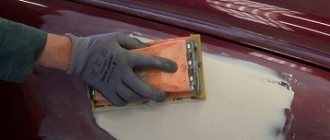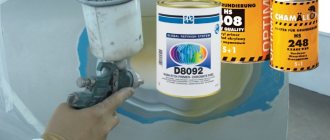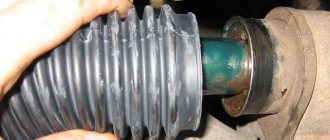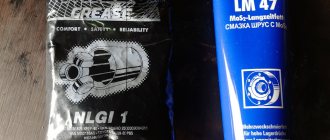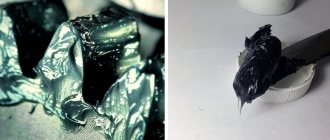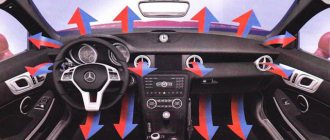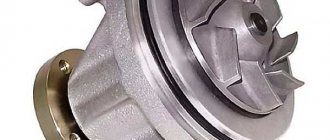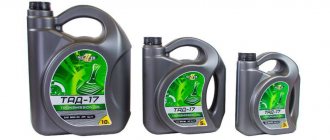How long does car putty take to dry? Putties are different and their layers are not the same, and the drying conditions may also be different. Therefore, it is not easy to say exactly the number of minutes. Approximately 30 minutes at a temperature of 20-25˚C and using a universal composition with a hardener. But there are also exceptions.
Composition of automotive putty
Putty is a mixture of polymer (polyester), talc and other additional components (such as fiberglass, carbon fiber, aluminum powder, etc.)
A catalyst is used to cure automotive putty. Anyone who has ever used car putty knows about the hardener, which is added from a tube and mixed with the putty before use. But not everyone knows what it is and how it works. This is MEK peroxide - methyl ethyl ketone, an aromatic chemical element. This component is dangerous to human health.
The polymer (resin) imparts adhesive properties, and talc serves as the main filler for the putty. The main solvent in putty is styrene, which evaporates when the putty hardens. It is styrene that gives the smell that everyone associates with putty.
Temperature greatly influences the exothermic reaction (the scientific name for the heat generated by reaction with a hardener). Hardening slows down significantly at temperatures below 18 degrees Celsius. If the temperature is not high enough, complete hardening may even take several days. The best temperature for working with automotive putty is from 20 to 25 degrees Celsius.
Also, the temperature of the metal on which the putty is applied is important. If the metal is cold, the putty will harden on the outside first. Styrene (putty solvent) may not have time to evaporate from the putty layer, which is closer to the metal surface. This solvent may begin to come out later, when the repair surface has already been painted.
It is better to stir car putty on glass, hard plastic or other material that will not affect the putty components. Cardboard, for example, is poorly suited for this purpose.
What is auto putty?
Before you figure out how to dilute putty and apply it yourself, you need to understand what you're dealing with. The very formulation of the concept of “putty” is enshrined in the state standard GOST 28246-89. This is a paste or liquid multi-component material used to eliminate defects on the surface of a part before painting it directly.
The composition includes the following components:
- Resins. The basic component of the mixture, on which adhesive properties, strength and other characteristics depend.
- Fillers. Additional components that form the specific properties of auto putties, for example, ease of processing, level of shrinkage, etc. They use glass and carbon fibers, chalk, talc, aluminum or zinc powder.
- Solvents. This is about a third of the total volume of the mixture. Deviation in any direction affects ductility and the degree of shrinkage. Any solvent itself is saturated with volatile substances, which evaporate as the putty dries, reducing its volume.
In practice, the following types of auto putty are used.
| Kinds | Characteristics |
| Filling. | Coarse-grained putty, the instructions for which stipulate application to a metal surface or a reinforcing reinforcing mass. Characterized by the possibility of pores forming after application. |
| Reinforcing. | It differs from the previous type in its increased content of fiberglass fillers. It is used if it is necessary to eliminate large defects (dents, scratches, corrosion damage, etc.). |
| Finish. | A fine-grained paste that is used to finish surfaces treated with a base coat of putty. Perfectly hides pores. |
| Putty for plastics. | Specific fine-grained masses that are used to seal cracks and scratches in plastic parts. |
| Sprayable. | A liquid mass that is applied to the surface using spray guns. Used to eliminate defects over large areas. |
| Acrylic. | One-component putty for treating small defects. The instructions say that it can only be applied in a thin layer. |
Expert opinion
Ilya Vyacheslavovich
Consultant for body repair at krasymavto.ru
Ask a Question
Automotive putties have different viscosities, which affect the complexity of application.
What layer of automotive putty can be applied?
Any body repair professional will tell you that the smaller the layer of putty applied, the better. It is better to carefully straighten the damaged surface first than to correct defects with thick layers of putty. Even if a thick layer of putty does not crack, it will cause more significant subsidence than a thin layer.
The safe thickness of putty is 3 – 6 mm. You can apply a thicker layer (taking into account the types of putties reinforced with glass and carbon fibers). To do this, you need to apply several thin layers with good drying and sanding between them.
When applying several layers of putty, do not degrease with a solvent. It will be absorbed into the putty and, later, after painting, will begin to evaporate, causing defects in the paint surface. It is better to blow dust from putty areas with compressed air and degrease with anti-silicone or other special degreaser that evaporates quickly. It must be remembered that the thicker the layer, the higher the likelihood of cracking.
(adsbygoogle = window.adsbygoogle || []).push({}); The best finishing putties
To prepare the surface of walls and ceilings for painting or other decorative finishing, finishing putty is required. The mixture ensures maximum smoothness and evenness, eliminating the slightest defects. There are several proven compositions in our rating.
Sheetrock SuperFinish
Rating: 4.9
Sheetrock SuperFinish finishing putty has a whole set of unique qualities. Firstly, the composition can be applied immediately after opening the bucket lid. Secondly, the product beats competitors in the main characteristic of the finishing material. This is a grain size of 0.03mm. The putty fits perfectly on substrates such as concrete, plasterboard, tongue-and-groove slabs. The combination of these characteristics is complemented by an affordable price, for which the composition takes first place in the rating. After drying, the putty does not hide any unpleasant surprises in the form of shrinkage or cracking.
Finishers consider this product the best finishing putty. It is perfect for subsequent painting of the surface or wallpapering.
- smallest grain size;
- no shrinkage or cracking;
- the mixture is ready for use;
- versatility of use;
not detected.
Weber vetonit LR+
Rating: 4.8
The dry polymer composition Weber vetonit LR+ surprised experts with its large application thickness (5 mm). In this parameter it has no equal among its competitors. Other properties of the composition also look good, which allowed the product to rise to second place in the rating. The putty did not reach the first place due to the large grain size (0.3 mm) and the long drying time (24 hours). Yes, and the mixture must be prepared correctly in order to obtain a perfectly smooth surface. But builders note the ability of the prepared solution to maintain working qualities for 48 hours. High plasticity was achieved by the manufacturer by adding organic plasticizers.
The putty can be applied not only manually, but also by machine. Finishers recommend using the mixture only in heated rooms.
- perfect white finish;
- affordable price;
- light sanding;
- easy application;
- shortage in the trading network;
- large grain size.
Knauf Rotband Pasta
Rating: 4.8
The finishing putty Knauf Rotband Pasta is created on a vinyl basis. The product also contains limestone, polymers and water. The paste-like mass is completely ready for use after opening the bucket. The scope of application of the composition is very wide, starting with concrete bases and ending with gypsum fiber boards. What helped the material get into the top three was not only its versatility of use, but also its fast drying time (5 hours). The high consumption of the mixture, which is 1.7 kg/sq.m., is somewhat disappointing. m with 1 mm coverage. After sanding, you can apply paint or wallpaper to the surface.
Experts note such advantages of the putty as excellent adhesion, lack of shrinkage and resistance to cracking. After drying, the surface becomes snow-white.
- fully prepared mixture;
- excellent adhesion;
- versatility of use;
- high price;
- high consumption.
Ceresit CT 225
Rating: 4.7
Ceresit CT 225 putty was the only cement composition in our rating. The product is intended not only for use in dry and warm rooms, but also for outdoor work. The scope of application is limited to concrete, cement-sand and cement-lime bases. Depending on the further type of finishing, both white and gray mixtures are produced.
Experts note the plasticity of the material, its excellent adhesive abilities, moisture and frost resistance. The composition contains reinforcing microfibers that prevent shrinkage and cracking after drying.
It is worth focusing the attention of users on the environmental friendliness of the composition. Finishers recommend not to exceed the thickness of one layer of 3 mm.
How to prepare the surface for applying putty?
It is important that all holes and cracks are welded before puttying. Any instability in the metal underneath the putty will cause it to crack. If you do not putty even small holes, the putty will draw moisture from the back side, through this hole, which will cause corrosion of the metal under the putty.
Manufacturers of automotive putties recommend applying it to clean metal, polished with a coarse abrasive (p36 - p120).
There should be no traces of corrosion on the metal. It is not advisable to apply it to cold metal. A barely noticeable condensation may remain on cold metal, which will be covered with putty and will oxidize the metal.
After the metal is prepared, it must be blown with compressed air and degreased.
Areas of use
The high pressure created by the Karcher compressor allows a jet of water mixed with sand to be thrown through the nozzle, thus effectively and quickly cleaning many surfaces.
The sandblasting nozzle will easily allow you to cope with some tasks in a very short time:
- cleaning various surfaces from complex contaminants;
- removal of building mixtures, glue, paint, varnish;
- cleaning metal from rust and corrosion;
- carrying out stripping of metal products for subsequent processing.
The simplicity of the design and the ease of self-production can significantly facilitate and increase the quality of the work you perform. This attachment will save your time and effort.
How much hardener should I add to the putty?
The amount of hardener affects the speed of the curing reaction, but too much hardener will increase the brittleness of the putty and its further cracking. The correct amount of hardener should not exceed 3% of the putty weight.
For beginners, it can be difficult to determine the amount of hardener that needs to be squeezed out of the tube to mix with the amount of putty you need.
You can use electronic scales to dose putty with hardener. Another, fairly accurate way to find out the amount of hardener for putty is to take the amount of putty required for application, put it on the surface for stirring and use a spatula to divide it into two equal parts. This will be 50%, then we divide into two more parts - 25%, again - 12.5%, again - 6.25%, again - 3.125% (this amount of hardener is the maximum), divide into two more parts - 1.5% (this minimum).
The 3M company, which owns the BONDO putty brand, recommends a simpler method of diluting the putty with a hardener. You need to put the required amount of putty on the mixing surface, and then squeeze out a strip of hardener from the tube, running from edge to edge through the center of this putty.
Some people squeeze out the hardener in the form of a cross passing through the center of the putty. This can be considered the maximum possible amount of hardener required for normal curing of automotive putty. In most cases (at an ambient temperature of 20–25 degrees), one strip along the pile of putty will be sufficient.
Too much hardener will make the putty brittle and prone to cracking. Too little hardener will increase curing time indefinitely.
Car puttying
Used for large body work, large dents or through holes. This putty is coarser and must be covered with finer putties. It is also much stronger than conventional putty and more difficult to process. Some craftsmen even begin processing without waiting for this putty to completely dry, because... then it is very difficult to process.
This is a standard fine-grained putty. Applicable in most cases. Sometimes it is covered with a finer putty, such as fine, but this is not necessary. Among the advantages, it is worth noting ease of processing and versatility.
It is finer than soft and is used as the last layer on top of coarser putties, and for repairing minor defects. It leaves virtually no pores and is very easy to process.
As a rule, it is of higher quality than soft putty. Although it sometimes has a coarser grain. Gives very little subsidence, is easy to grind, and is not afraid of vibration. Many craftsmen who perform car body repairs use it as the main putty in their work.
Putty intended for application with a gun. Of course, it is not able to give the same layer as a regular putty, but it can also be applied much thicker than a pore-filling primer. Despite the simplicity of the work, one must not forget that it is a putty and needs to be coated with primer.
One-component putty. It is used to seal very small defects or chips.
As already mentioned, applying car putty requires some skill. Because the car body is not flat (like walls, for example) and here it is necessary to derive the shape. Let's look at a few examples:
At what temperature does car putty harden?
The recommended temperature for working with putty is 20 – 25 degrees Celsius.
The lowest temperature at which car putty can be used is 7 to 10 degrees Celsius. When using putty at low temperatures, you need to slightly increase the amount of hardener.
If the temperature exceeds 30 degrees Celsius, the putty will harden very quickly. In such cases, you need to work with a small amount of putty at a time. If you use heat from external sources to speed up the hardening of the putty, then you need to keep them at such a distance that the surface remains warm, but not hot.
How long does it take for car putty to dry? 18 July 2022, 12:35
It’s rare that any body repair is complete without putty, even if we talk about the “garage” level of repair work. Previously, the body was either leveled - which is not very practical and certainly not aesthetically pleasing - or damaged parts were completely replaced (fenders, doors, hood, etc.). But with the advent of automotive putty, everything changed. It made it possible to restore the normal appearance of a car, restore the body after minor accidents, and hide various mechanical damage.
Tools and materials for work
Before you carry out repairs yourself and fill up uneven areas, you should carry out preparatory work. They include the acquisition of the necessary material, the preparation of tools and the preparation of the site itself that requires restoration.
To carry out puttying work you will need the following materials and tools:
- sandpaper;
- wiping to remove remaining paint and dirt;
- putty directly;
- solvent;
- hardener;
- grinding wheel;
- putty knife;
- gloves.
To fill an uneven surface or dent, you need to follow several steps. Moreover, it is important to approach each of them responsibly, since the final result will depend on the quality of the work, and the slightest mistake will cause a new repair.
Necessary materials
In addition to equipment and tools, materials are needed.
- Putty. You will need a universal and finishing one. The first one struggles with deep scratches and failures. The finishing agent removes paint smudges and defects from previous work.
- Abrasive materials. This includes sandpaper, sandpaper for a plane, and wheels for a sander.
- Priming. It is necessary for application before painting.
- Polishing pastes
- Wipes for degreasing surfaces. Effectively removes grease and anti-silicone.
- Mattifying paste. Necessary to detect defects remaining after sanding the putty
- Masking tape. Helps protect body parts from staining
- Dye
- Varnish
